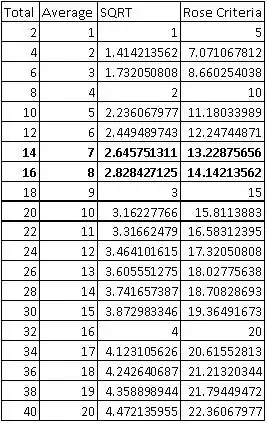Albert Rose studied this question in the 1940's and developed the Rose Criterion which states that the signal-to-noise ratio ($SNR$):
$$SNR=\dfrac{\mu}{\sigma}$$
For $100$% identification of an object by the human eye is $SNR \approx 5$. He based this off of quantum arguments where he looked at the average number of photons per unit area in an photo image and stated gave the equation $\Delta N = kN^{\frac{1}{2}}$ where $\Delta N$ is the smallest perceptible change and $N$ is the average number of quanta absorbed in a pixel and $k$ is the $SNR$ (see eq 1, 1a and figure 1).
If one uses this ratio, then in two independent pixels one can distinguish one from the other if there are an average of $100$ quanta absorbed in the pixels, then one would be able to distinguish between the two, if one had $50$ quanta more than the other. This relationship has an obvious limit when the average number of quanta are $> 7$ and all the photon ($> 14$ total for two pixels) are found in one pixel and not the other, as shown in the table below.

